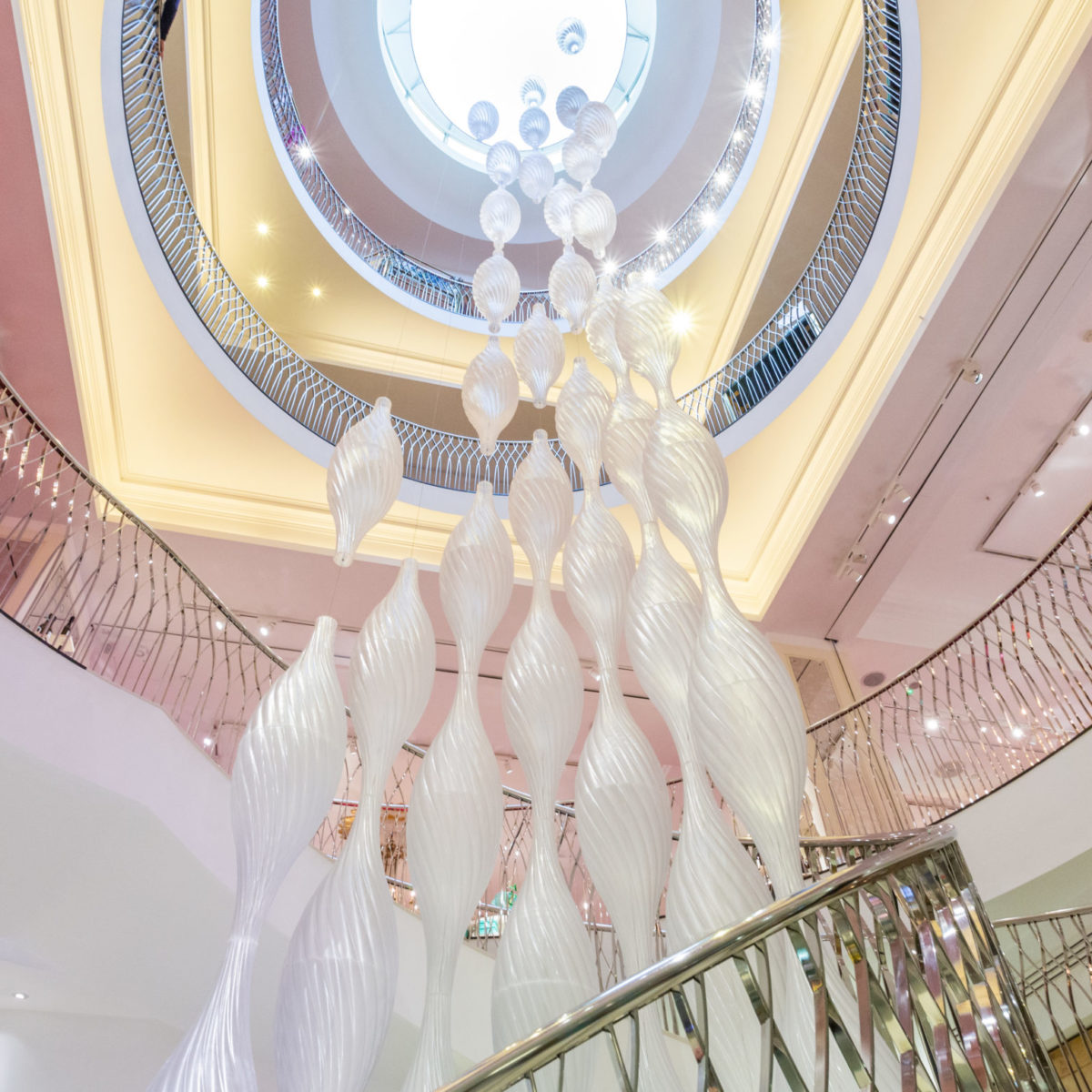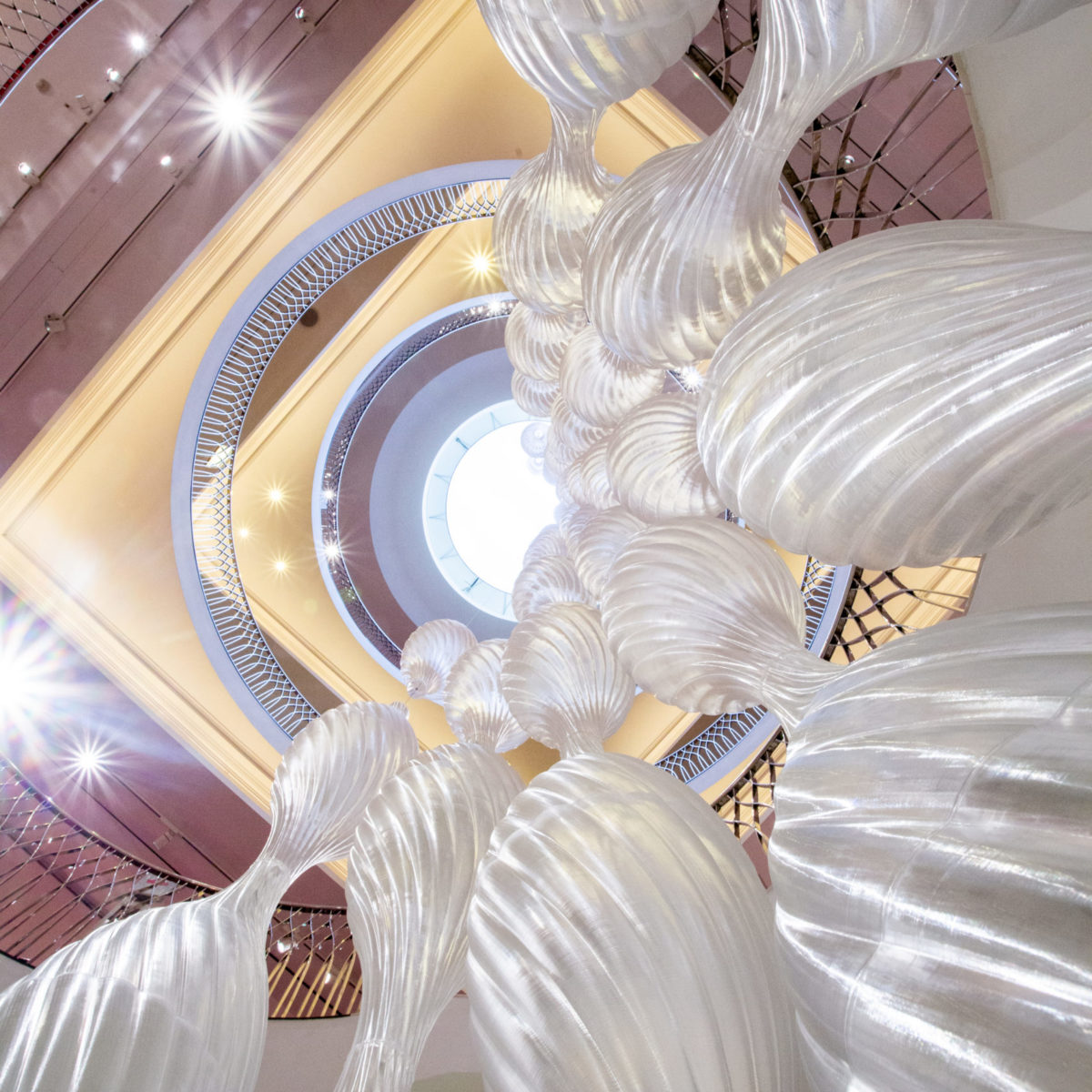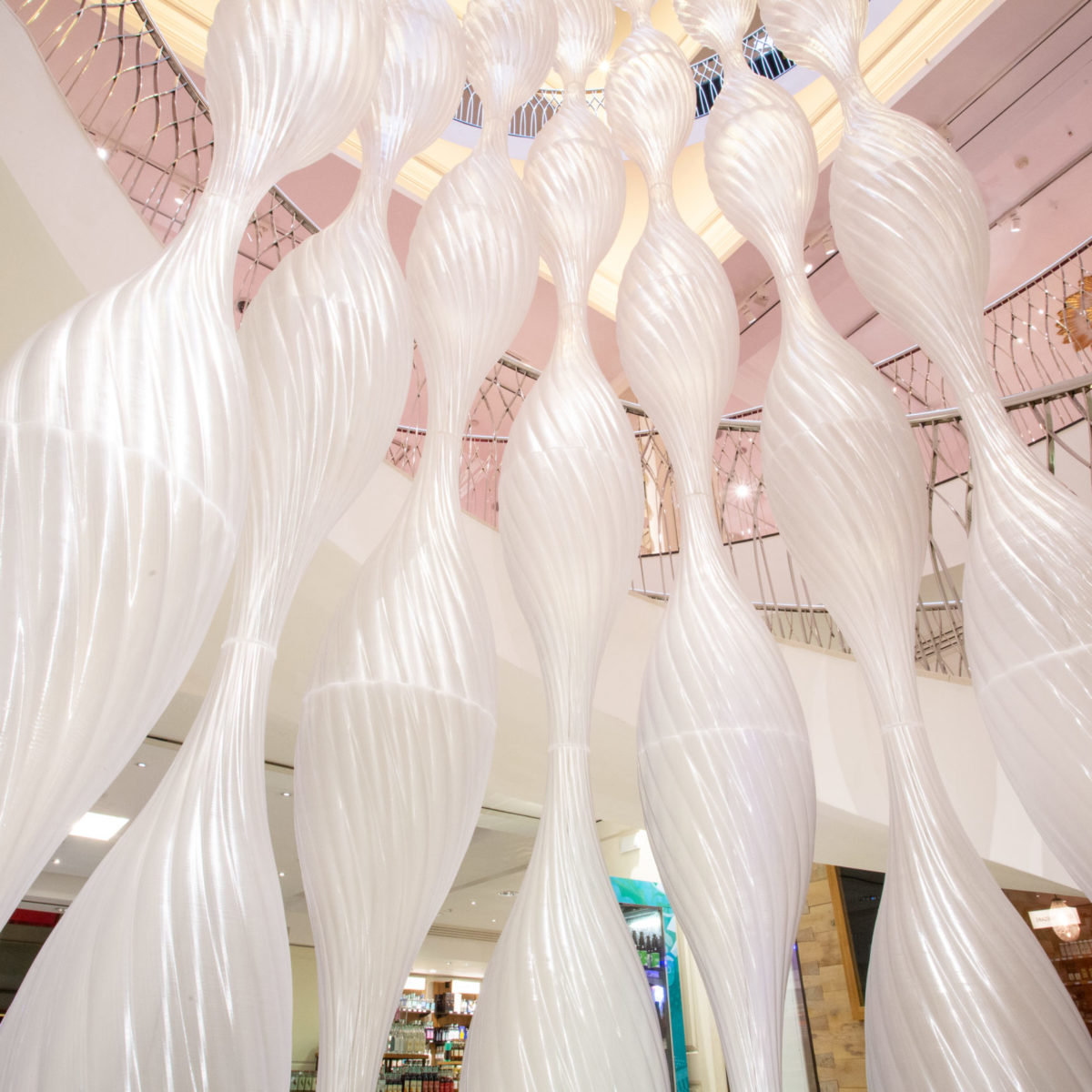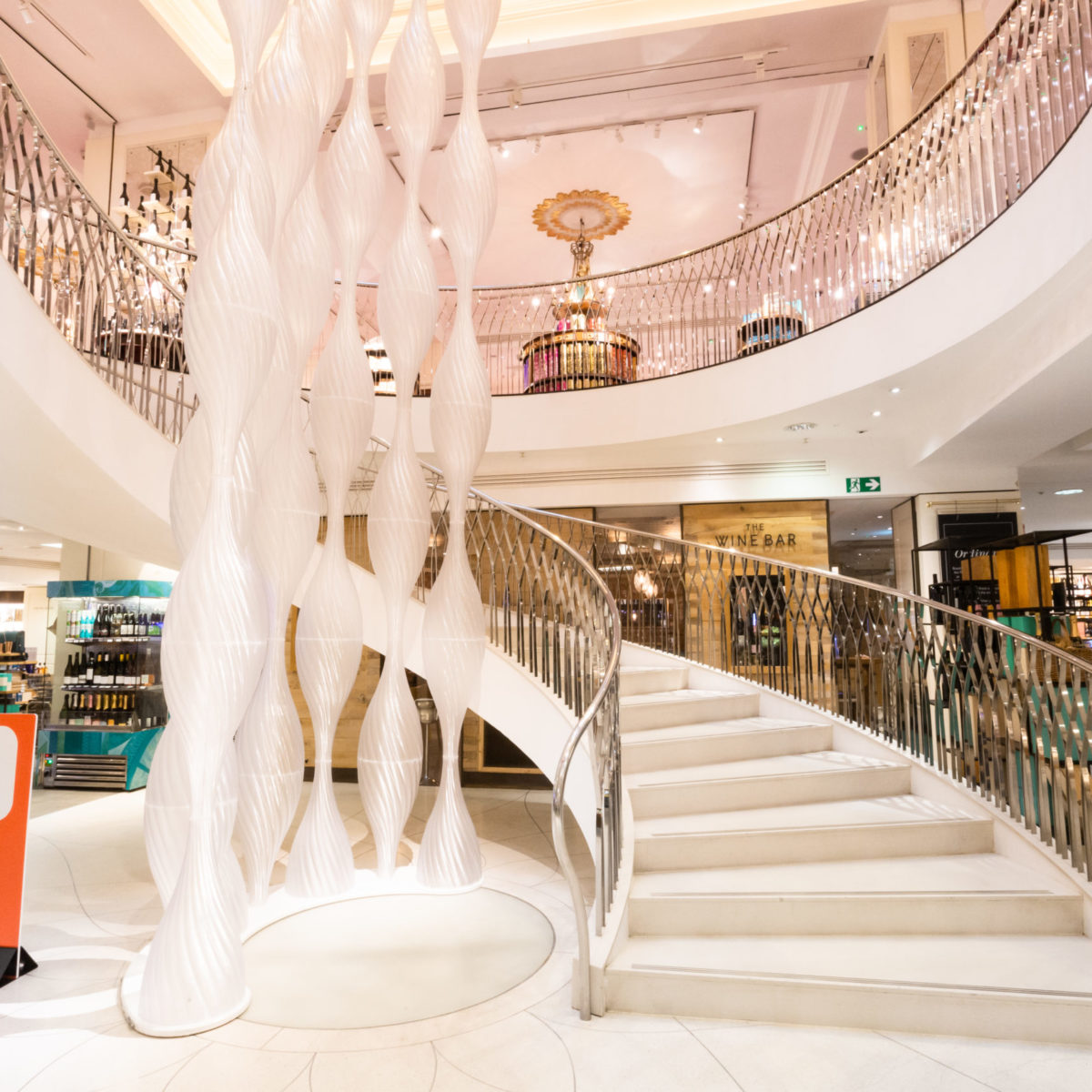DATE 2021
LOCATION LONDON
STATUS COMPLETED
CLIENT FORTNUM & MASONS, LONDON DESIGN FESTIVAL
TEAM
Mamou-Mani ltd.
Arthur Mamou-Mani, Yvonne Onah, Fun Yuen, Krishna Bhat, Chioma Ekwo
Fab.Pub ltd.
Giovanni Panico, Jonah Maxted
Our new installation opening this September 2021 at @fortnums for @l_d_f_official
A combination of factors, including habitat loss, climate change and pesticide use has seen bee numbers devastated in recent years. Research suggests that the UK has lost an average of 11 species of bee and hoverfly between 1980 and 2013 in every square kilometer of the country.
Individual components will be on sale following the Festival to raise funds to support the UK’s bee populations, with 50% of all proceeds donated to Bees for Development.
mellifera at @fortnums is made of 44 x 3D printed fermented sugar #beehive modules (PLA #bioplastics produced locally at @fab.pub) that we will sell after the @l_d_f_official to help #pollinators through the charity @beesfordevelopment – photos by @carmenvalinophotography
Some facts and stats on the material we used: PLA can be made from any fermented plant starch (sustainable, renewable sources that are natural carbon sinks).
PLA Bioplastics is up to 80% more effective at reducing energy needs (0.49 kg CO2-e vs 2−3 kg CO2-e for petroleum equivalent.)
More than 50% of carbon emission in the U.S. incinerator plants come from petroleum based plastics burning. PLA is up to 30 times less toxic than petroleum based plastics when heated (When heated, PLA gives off a non-toxic chemical called Lactide).
PLA is biodegradable (It can degrade naturally over time. Warm temperatures, high humidity and small particle sizes will make biodegradation even faster). Big pieces break down slowly as the microorganisms don’t have high surface area available for enzymatic action. If the conditions for fast natural degradation are not met, PLA can be sent in industrial composts to accelerate the process. PLA is therefore a “cradle to cradle” material (it comes from earth and can be brought back to earth without harming natural habitats, including marine habitats).
A PLA bottle left in the ocean would typically degrade in six to 24 months. Compared to conventional plastics (which in the same environment can take several hundred to a thousand years to degrade).
Soil mixed with composted PLA remains suitable for plant growth despite a slight lowering of PH levels (The optimum pH range for many plants is between 5.5 and 7.5, PLA based soil is within this range).
PLA Bioplastic does not contain the hormone disruptors often found in traditional plastics – bisphenol A (BPA) .
PLA is mechanically stronger (stronger/stiffer) than most petroleum-based plastics.
Recycling alone cannot be a long term solution for any plastics: All plastics cannot be recycled forever, they have a limited cycles so we need to think beyond that.






